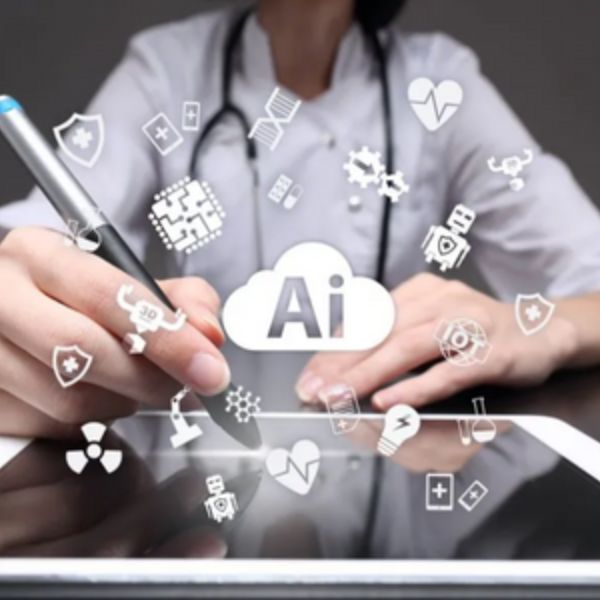
Three Tips for Healthcare CIOs on the Path to Revenue Cycle Innovation

About 75% of U.S. healthcare organizations increased their IT spending last year according to research by KLAS in collaboration with Bain & Company. Among the biggest categories on many Chief Information Officer’s minds? AI.
Over my 18 years in healthcare, one truth has become clear: technology isn’t just changing how we work, it’s shifting care delivery and back office workflows across the health ecosystem. I’ve seen firsthand how automation and artificial intelligence (AI) reshape revenue cycle management (RCM), help providers stay financially strong, and ensure better patient care and experiences.
But adopting new technology isn’t easy. The biggest challenge is often bridging the gap across system silos and navigating new intra-departmental processes. People are the lynchpin for new technology change. This reality is especially true in the revenue cycle where long-standing teams and legacy technology are the norm.
That’s why the future of revenue cycle automation belongs to those who balance innovation with proven change management strategies. Below, we explore three must-dos for health innovators on the path to revenue cycle automation.
1. Connect the dots across disparate systems
Many organizations operate on a patchwork of systems, electronic health records (EHRs), practice management platforms, and bolt-on solutions that weren’t designed to work together. This results in inefficiencies, compliance headaches, and clunky user experiences.
CIOs and CTOs are tasked with maintaining these disconnected systems while keeping everything secure and operational. Meanwhile, end users want a single, integrated solution that allows them to easily flow through the technology and get the information they need when they need it.
To address these challenges, health leaders must collaborate with back-office teams, clinicians, and IT partners to optimize legacy systems, field end user feedback, and ensure successful training and adoption. Current EHR, RCM, and practice management platforms must be evaluated for opportunities to consolidate and avoid introducing more systems to the mix.
Amid a sea of digital health startups, it is important that IT teams do not get caught in “shiny object syndrome” and proceed with caution, focusing on tools that provide the right level of integration for their facility. Additionally, it is crucial to choose solutions that enable efficient and accurate data sharing across care environments. This reduces the chaos of managing multiple systems and simplifies care delivery.
2. Stay informed as AI evolves
Artificial intelligence isn’t a new idea, yet it can be difficult to keep up with constant changes. The tools available today will look different six months, one year, and two years from now. My first experience with automation was at the University of Pittsburgh Medical Center (UPMC) where we used robotic process automation (RPA) to track claim statuses from payer websites. It was a simple solution, but the impact was huge — fewer manual tasks, faster claim updates, and more accurate billing.
Since then, the conversation has changed. We’ve moved beyond basic task automation to intelligent, AI-driven systems that can do more than follow a script. These systems can prioritize workloads, flag exceptions, and even assist with decision-making, a “human-in-the-loop” approach. Instead of replacing staff, AI supports them by handling repetitive work and surfacing complex cases where human judgement is required.
The goal is for AI tools to become strong enough to support decision-making in areas like claims management. We’re not there yet, but the progress is real. Technology leaders who stay in-tune with rapid AI changes help their organizations stay ahead of the curve.
3. Look for real-world use cases and proven outcomes
The benefits of AI and automation in RCM go beyond theoretical promises. Here are three areas where the results speak for themselves:
What’s Ahead for the AI-Empowered Revenue Cycle
The future of RCM isn’t just about new technology, it’s about whether your systems can keep up. With the rise of automation, AI, and smarter platforms, providers must decide whether to upgrade existing systems or invest in new technology. The right choice depends on your long-term goals, but one thing is clear, sticking with disparate platforms will leave your organization struggling to keep pace.
Real-time analytics is one enhancement that equips financial teams with key information including payer behavior trends, denial predictions, and nudges for better claims management. This innovation helps coders and billers prioritize workflows and forecast which claims are most likely to be approved.
Another critical area for improvement is prior authorizations. While payers are investing heavily in AI to automate approvals, many healthcare providers are still bogged down by unintuitive systems. To stay competitive, organizations should prioritize platforms that support automated prior authorizations. This reduces manual intervention, speeds up approvals, and cuts the administrative drag on staff. A phased implementation can smooth the transition, allowing gradual adoption without disrupting daily operations.
Leaders who implement AI, automation, and analytics forage pathways for organization-wide, patient-centered improvements. Technology should empower care delivery, not distract from it. I’ve seen the transformation possible when coders, billers, and providers work in sync with the necessary tools to support this process.
Why People will Always Matter in an Automated World
It’s important to explore technology, but ultimately, healthcare is about people. As mentioned above, AI must be navigated through effective change management and workforce, including clinicians. AI can handle data, but it can’t replace the empathy and judgment that human professionals bring to the table.
Automation is a tool to empower people, not replace them. When implemented correctly, AI reduces burdens and helps clinical and back-office teams stay focused on the high-priority tasks at hand. And when technology serves people, not the other way around, everyone wins.







